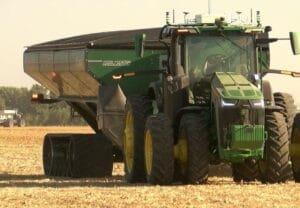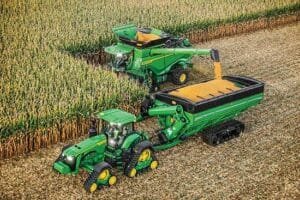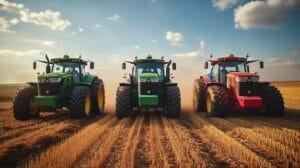The Agricultural AI Robot Market is witnessing unprecedented growth as farming operations worldwide increasingly embrace automation and artificial intelligence technologies.This change, driven by labor shortages, efficiency demands, and sustainability concerns, is reshaping traditional agricultural practices. Recent market analyses project significant expansion in the agricultural robotics sector through 2030, with AI-powered machines performing tasks ranging from precision seeding to autonomous harvesting. As global food demand rises and agricultural challenges intensify, these smart farming solutions are emerging as critical tools for modern agriculture, promising to optimize resource utilization and enhance crop yields. The agricultural robotics sector is witnessing unprecedented growth, with AI-powered machines revolutionizing traditional farming practices. Market projections indicate a substantial compound annual growth rate of 22.5% between 2023 and 2030, driven by increasing labor shortages and the need for precision agriculture.
These intelligent farming robots are equipped with advanced sensors, machine learning algorithms, and computer vision systems, enabling them to perform various tasks autonomously. From planting and harvesting to crop monitoring and pest control, these machines are transforming the agricultural landscape while improving efficiency and reducing operational costs.
Key market players are focusing on developing specialized robots for different crop types and farming operations. Fruit-picking robots using refined grip mechanisms and visual recognition systems are gaining significant traction, especially in orchards and greenhouse environments. These machines can work continuously, ensuring optimal harvest timing and reducing crop waste.
The integration of IoT sensors with AI robots enables real-time data collection and analysis, providing farmers with valuable insights for decision-making.Soil composition, moisture levels, nutrient content, and crop health can be monitored continuously, allowing for precise resource allocation and improved yield management.
North America currently leads the market, with extensive adoption in large-scale farming operations. However, the Asia-Pacific region is expected to witness the fastest growth, driven by government initiatives supporting smart farming practices and increasing awareness among farmers about technological benefits.
Weather-resistant designs and improved battery life are enabling these robots to operate in diverse environmental conditions. Manufacturers are incorporating solar charging capabilities and advanced power management systems to extend operational hours and reduce maintenance requirements.
Investment in agricultural AI robotics has surged, with venture capital firms and agricultural technology companies pouring significant resources into research and development. This funding surge is accelerating innovation in areas such as swarm robotics, where multiple smaller robots work collaboratively to manage large farming areas more efficiently.
Emerging applications include weed control robots using precision spraying techniques, reducing herbicide usage by up to 90% compared to traditional methods. Additionally, autonomous seeding robots are being developed with variable-rate technology, optimizing seed placement based on soil conditions and ancient yield data.
Challenges remain in terms of initial investment costs and the need for specialized training. Though, the long-term benefits of reduced labor dependency, improved resource efficiency, and increased crop yields are driving market expansion. Regulatory frameworks are evolving to accommodate these technologies, with countries developing guidelines for autonomous machine operation in agricultural settings.
The market is also witnessing increased demand for robots capable of handling organic farming practices, with specialized mechanisms for mechanical weed control and natural pest management. This trend aligns with growing consumer preference for sustainably produced food products.









